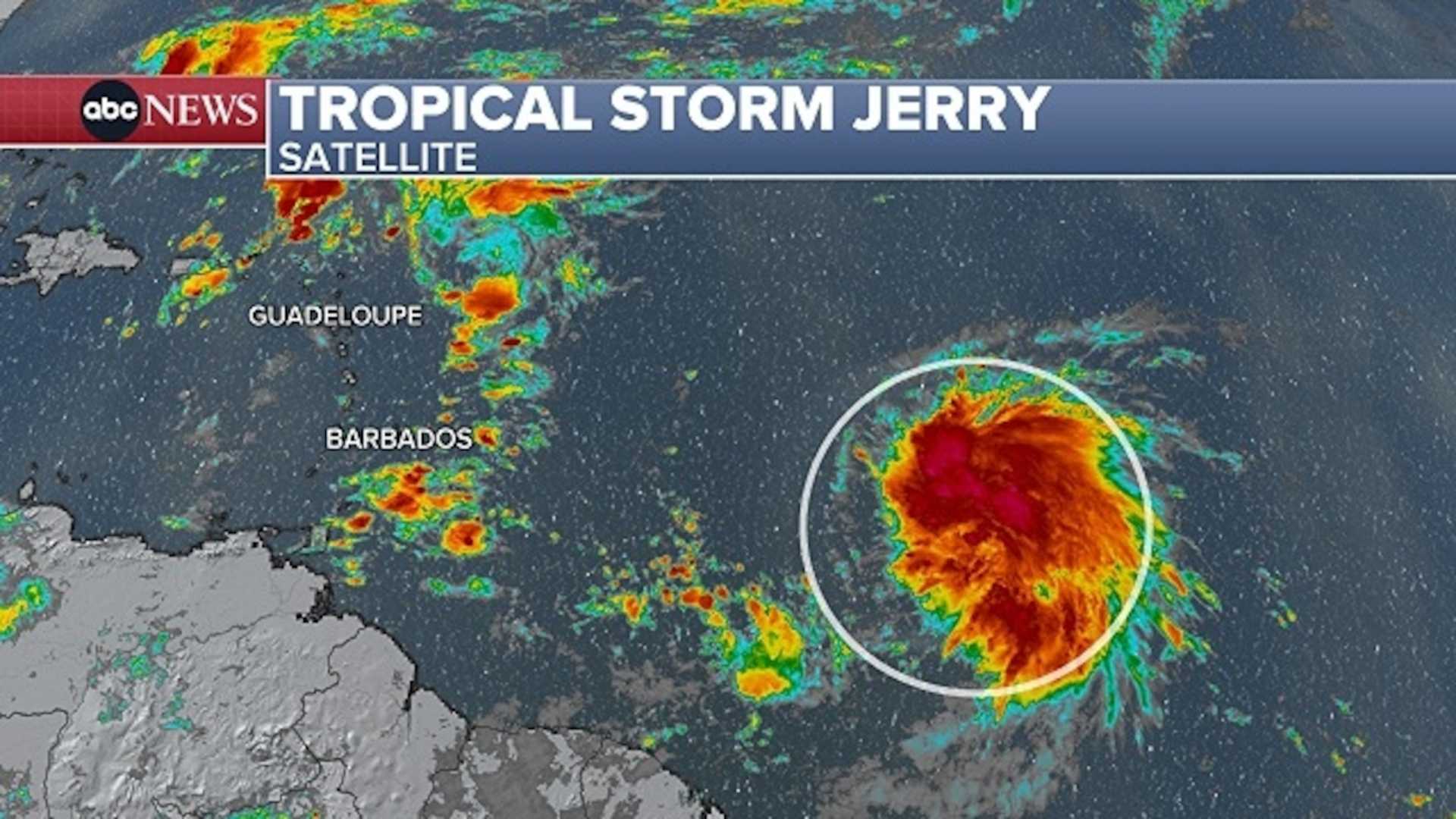News
Tropical Storm Jerry Expected to Strengthen into Hurricane

MIAMI, FL — Tropical Storm Jerry is moving across the central Atlantic Ocean and could strengthen into a hurricane by Friday. The storm was formed on Tuesday and is the 10th named storm of this hurricane season, which has been active, producing three hurricanes in just over two weeks.
As of Thursday morning, Jerry had sustained winds of 65 mph and was located approximately 350 miles east-southeast of the northern Leeward Islands. A tropical storm watch is currently in effect for much of the Leeward Islands, where the storm is expected to pass later this Thursday into Friday.
The storm is traveling to the west-northwest at a speed of 20 mph. Although environmental conditions are currently hindering its development, the National Hurricane Center predicts Jerry will likely slow down and strengthen into a hurricane as it moves north of the Leeward Islands.
Jerry is predicted to bring wind and rain to the Leeward Islands through Friday, but the strongest winds will largely stay offshore. Rainfall accumulations of up to four inches are possible in the Leeward Islands and parts of the U.S. and British Virgin Islands, while eastern Puerto Rico could see one to two inches.
A cold front moving off the East Coast is expected to keep Jerry from threatening the U.S. mainland. Such fronts typically increase in frequency during October, making storms forming in the Gulf and Caribbean of greater concern due to their proximity to land.
Despite low chances for development in the Gulf this week, a potential storm-generating weather pattern may emerge by mid-October, according to Phil Klotzbach, a hurricane expert from Colorado State University. This area is known for its potential to produce late-season storms.
October typically sees an increase in tropical storm activity, with four named storms expected. The past several years have shown varied patterns of activity during this time. For example, seven storms formed in October and November last season, compared to just two in the same period in 2023.
Though fewer storms often occur as the season winds down, late-season storms can still be highly destructive. Events like Hurricane Michael in 2018 and Hurricane Sandy in 2012 serve as reminders of the dangers posed by storms this time of year.
As of now, no hurricanes have made landfall in the U.S. this season. If this trend continues through November, it would mark the first hurricane landfall-free season in a decade.












